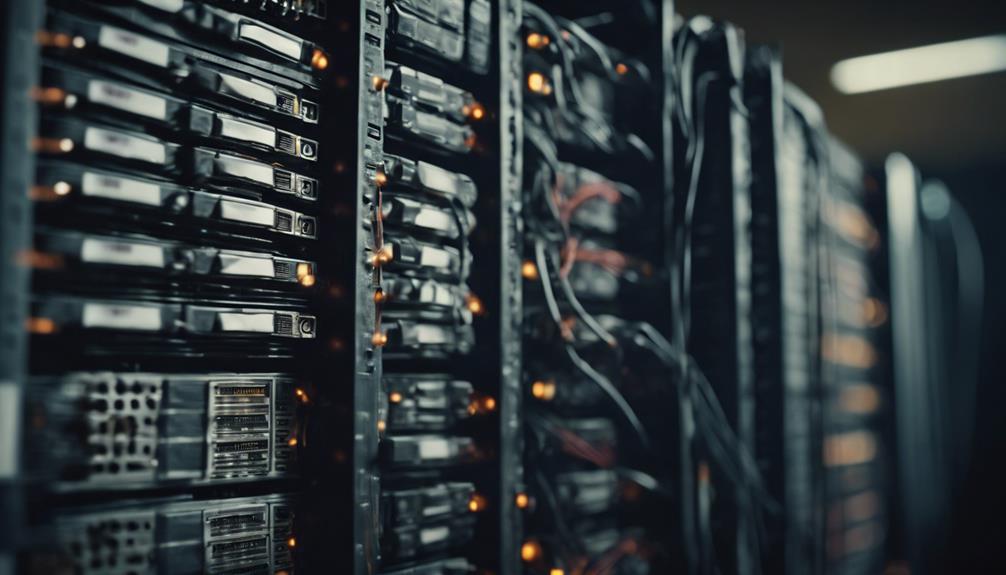If your WordPress installation is encountering issues, verify errors in database details, PHP memory limits, and server configurations. Incorrect settings can disrupt the setup process. Confirm compatibility with the latest PHP version and proper file permissions for smooth functionality. Troubleshoot plugin conflicts that may arise during installation. Address server resources to prevent future problems. Pay attention to file upload settings to avoid errors. Following recommended installation steps can help streamline the process. Regular maintenance and backups are essential for safeguarding your website. Understanding these common issues can help you overcome installation hurdles and enhance your WordPress experience.
Common Causes of WordPress Installation Issues
If you encounter problems during your WordPress installation, common causes often stem from incorrect database details in the wp-config.php file. Ensuring that the database name, username, password, and host are accurately configured in the wp-config.php file is vital for a successful installation. Failure to input the correct database information can result in database connection errors, halting the installation process.
Additionally, errors related to the PHP Memory Limit can lead to issues post-installation, such as the white screen of death. Adjusting the PHP Memory Limit in the server settings or through the wp-config.php file may resolve these issues. It's essential to allocate sufficient memory to prevent critical errors impacting the functionality of your WordPress website.
Server Settings and Compatibility Problems
Make sure to double-check your server's PHP version to prevent potential compatibility issues that could lead to errors.
Addressing memory limits is essential to avoid encountering the infamous white screen of death after installation.
Confirm your file permissions are correctly set up to prevent internal server errors that may disrupt your WordPress setup.
PHP Version Compatibility
To guarantee smooth WordPress installation and peak performance, confirm that your server settings support PHP version 7.4 or higher. Using outdated PHP versions below 7.4 can lead to compatibility issues with the latest WordPress updates, resulting in installation errors.
Updating your PHP to version 7.4 or above can resolve many of these issues and enhance your website's functionality. Hosting providers often offer PHP version selection in their control panels, making it easy for you to upgrade.
Memory Limit Issues
Confirm that your server settings are optimized to handle memory limit issues, which can impact the performance of your WordPress installation. WordPress memory limit problems may result in errors such as 'Memory Exhausted' and slow website performance.
By adjusting the PHP memory limit in the wp-config.php file and modifying the WP_MEMORY_LIMIT value to a higher setting, you can address memory-related issues during the WordPress installation process. These memory limit errors can hinder plugin functionality, theme customization, and overall website performance.
Resolving memory limit issues promptly is important to prevent website crashes and enhance user experience. Take proactive steps to make sure that your server can adequately handle the memory demands of your WordPress site.
Incorrect File Permissions
Checking and adjusting file permissions on your server is essential to avoid issues with WordPress installation and guarantee smooth functionality of themes, plugins, and core files. Incorrect file permissions can lead to errors in accessing and modifying files, causing compatibility problems that hinder proper functioning. Security vulnerabilities may arise from improper settings, potentially compromising website integrity.
To resolve file permission issues, it's important to adjust settings to ensure the right levels of access for different users and processes on the server. Understanding and configuring file permissions correctly is fundamental for a smooth WordPress installation process and overall website performance.
- Inadequate file permissions can leave your website vulnerable to cyber threats.
- Correct file permissions ensure seamless interaction between WordPress components.
- Adjusting permissions promptly enhances server security and website reliability.
Impact of Outdated PHP Versions
If your WordPress site is experiencing compatibility issues or security vulnerabilities, outdated PHP versions might be the culprit.
Upgrading to the latest PHP version can enhance the performance, stability, and security of your website.
Regular PHP updates are key to ensuring a smooth and secure operation of your WordPress installation.
PHP Version Compatibility
Ensuring your WordPress site runs smoothly and securely hinges on maintaining a PHP version that aligns with the platform's recommended standards. Outdated PHP versions can lead to compatibility issues with newer WordPress features and plugins, potentially exposing your site to security vulnerabilities and performance issues.
Consider the following to understand the importance of PHP version compatibility:
- Upgrading PHP versions regularly guarantees peak performance and stability.
- Unsupported PHP versions may compromise your site's security.
- Hosting providers typically offer easy options to update PHP versions through the control panel.
Security Vulnerabilities
Maintaining an updated PHP version for your WordPress installation is crucial to safeguarding your site against security vulnerabilities, particularly in relation to outdated PHP versions. Outdated PHP versions in WordPress installations can create opportunities for malicious actors to exploit security vulnerabilities.
By updating PHP to the latest version, you guarantee that your site is protected against known security threats. Security patches and bug fixes in newer PHP versions address vulnerabilities that could otherwise be exploited by hackers.
Neglecting to update PHP exposes your site to risks such as unauthorized access, data breaches, and malware injections. Stay proactive in monitoring and promptly updating PHP to mitigate security risks and maintain a secure WordPress installation.
Database Configuration Challenges

To address database configuration challenges in WordPress installation, make sure that the database details in wp-config.php are accurate. Here are some tips to help you navigate through these challenges:
- Create a new database: Setting up a unique database specifically for your WordPress installation can help avoid conflicts and ensure smooth operation.
- Check wp-config.php: Verify that the database name, username, password, and host details in the wp-config.php file match the settings of your newly created database.
- Address low memory limits: Increasing memory limits or enabling debugging mode can tackle issues like the white screen of death, caused by insufficient memory allocation or PHP errors.
Troublesome Plugins and Themes
When dealing with troublesome plugins and themes in WordPress, identifying and resolving conflicts promptly is important for maintaining a stable website. Problematic plugins and themes can cause conflicts with WordPress core files, leading to errors during installation.
Certain themes may not be compatible with specific plugins, disrupting the functionality of your site. Outdated or poorly coded plugins are common culprits that can disrupt WordPress sites.
Conflicting CSS or JavaScript code within themes and plugins often result in visual and operational issues. To mitigate these problems, regularly updating plugins and themes is vital. By staying up-to-date, you can prevent installation issues and ensure smooth functionality.
Insufficient Server Resources

Address server resource deficiencies by upgrading the PHP memory limit or opting for better web hosting to resolve issues with slow performance and errors during the WordPress installation process. Inadequate server resources can lead to database connection issues, the White Screen of Death, or other critical errors, hindering a smooth installation experience. Take proactive steps to guarantee your server can support WordPress effectively.
- Upgrade Your PHP Memory Limit:
Enhancing your PHP memory limit can enhance the performance of your WordPress installation, reducing the likelihood of errors.
- Invest in Better Web Hosting:
Opting for reliable web hosting services with ample resources can greatly enhance your WordPress experience.
- Monitor Server Resource Usage:
Regularly monitoring your server's resource usage and optimizing configurations can prevent future installation issues related to insufficient server resources.
File Upload and Installation Errors
File upload and installation errors can impede the smooth setup of your WordPress site, requiring attention to file permissions and upload settings. Incorrect file permissions on the server may lead to issues during the installation process.
It's important to avoid incomplete file uploads as they can result in installation issues within WordPress. Checking and adjusting the maximum upload size limit in PHP settings can help prevent file upload errors.
Moreover, ensuring file integrity by verifying checksums after uploading files is vital for a successful installation. Utilizing FTP clients for secure and reliable file uploads is recommended to avoid encountering installation issues related to file uploads.
Recommended Installation Steps

For a smooth and successful WordPress installation, it's important to follow a series of recommended steps. Here are some essential steps to guarantee a hassle-free installation process:
- Verify Database Details: Double-check the database details in the wp-config.php file to guarantee accuracy and avoid installation issues.
- Check PHP Version: Make sure that your PHP version is compatible with WordPress requirements to prevent any compatibility glitches during installation.
- Manage File Permissions: Verify file permissions and ensure all files are uploaded correctly to prevent missing files that could hinder the installation process.
Importance of Regular Maintenance and Backups
Regular maintenance and backups are essential for ensuring the security and stability of your WordPress website. Safeguarding your WordPress files and database through regular backups is fundamental in protecting your website from potential data loss and security breaches. In the event of errors or security breaches, having backups in place allows for quick recovery, minimizing downtime and potential damage. Scheduled backups also play an important role in reducing the risk of losing important content or customizations during updates or installations.
Moreover, regular maintenance tasks such as plugin updates, security checks, and database optimizations are necessary for enhancing your website's performance and overall functionality. Implementing automated backup solutions further streamlines the backup process, ensuring that your data is consistently and automatically backed up without the need for constant manual intervention. By prioritizing regular maintenance and backups, you can proactively safeguard your WordPress website and maintain its security and functionality effectively.
Conclusion
In closing, keep in mind to troubleshoot common causes like server settings and plugin issues to guarantee a smooth WordPress installation. Keep your PHP version updated, configure your database correctly, and monitor server resources.
Regular maintenance and backups are essential for a seamless WordPress experience. By addressing these factors, you can prevent future issues and optimize your WordPress site for peak performance.
Stay proactive, stay organized, and stay ahead of any potential problems.


